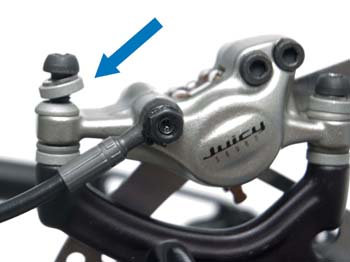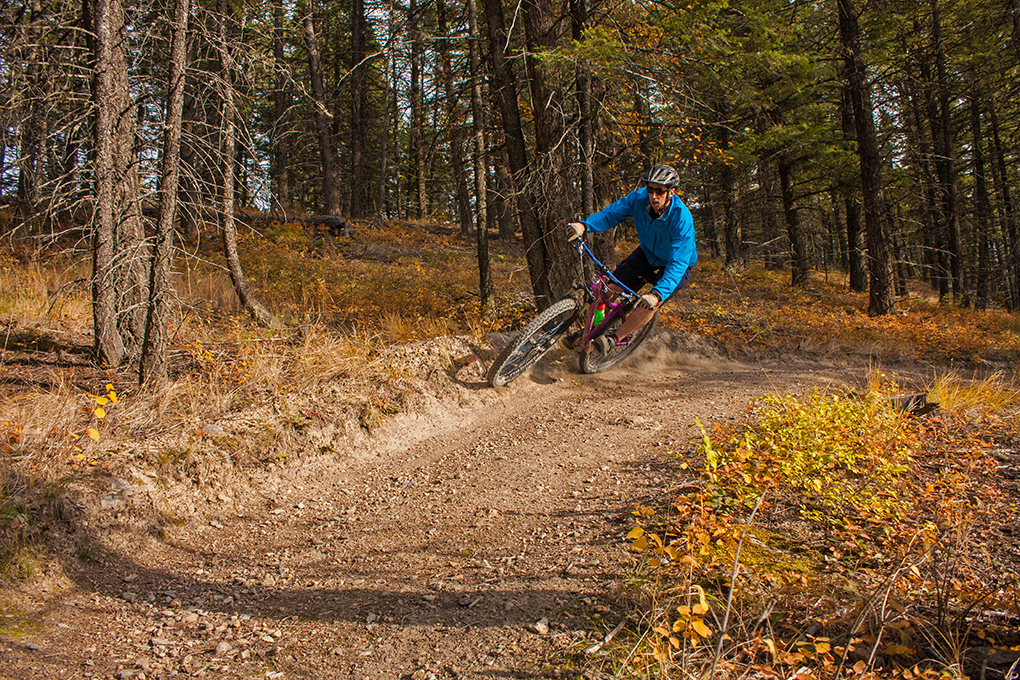Heat / Fade issues
My Avid brakes in the past have exhibited some fade on long descents. It was never horrible, but it was definitely noticeable. While some models (Codes) were better than others, they all faded at one point or another.

Since my testing of the Elixir 9 Trails was split between the end of my season last fall and the beginning of my season this spring, snow in the mountains has prevented me from running many of the longer descents around Whitefish, Montana. For that reason, I never put the brakes into a situation where I would normally expect fade to become particularly noticeable. That said, on a few occasions when I did get them warm, they started to feel a bit less powerful. The Elixir 9 Trails are definitely a bit more powerful than the 2 piston models they replace, however, and they should still offer pretty good power even when they get toasty. But I can’t say that these are some magical brakes that don’t fade at all.
A Few Things I Don’t Like.
The Elixir 9 Trails, generally speaking, are great brakes that I would recommend to anyone needing stoppers on their trail bike. But not all is perfect; here are my admittedly nitpicky gripes.

The Elixir 9 Trails no longer use the cup and cone washers that used to be standard on Avid brakes. Those little washers allowed you to achieve good brake alignment even if the mounting tabs on the frame were a little wonky. Now, if your frame is a bit off, you have to go to a shop to get the brake tabs faced (assuming you don’t have a facing tool in your home tool chest). I have no idea why SRAM stopped using the cup and cone washers on these brakes, but I think this is a step in the wrong direction.
The Elixir 9 Trails also continue SRAM’s use of various sized torx bolts and screws in their products. Torx fittings are better than hex fittings for most applications–they don’t round out as easily and the bolt head can be made to be slightly lower profile. But 90% of the bolts on my bike are hex fittings, and SRAM uses torx fittings in decidedly low-torque applications where rounding out the bolt isn’t a point for concern in the first place (rotor bolts being an exception).
To make this a bit more confounding, SRAM doesn’t consistently use torx fittings. Their shifters and brakes tend to use torx fittings, while their derailleurs and forks tend to use hex fittings. SRAM’s cranks are a crapshoot and sometimes have both.
What this comes down to is that SRAM has now put a wide variety of fittings on my bike with no clearly defined benefit. This means I have to carry a few more tools with me on any given ride, which just seems unnecessary. And, to be fair, while I’ll spend 250 words bitching about this, it’s not quite inconvenient enough that I’ll spend the time to rustle up hex fittings to replace the stock bolts. But if you’re a SRAM / Avid engineer and you’re reading this, I am mildly peeved at your erratic choice of fasteners.
Elixir 9 Trail vs. Shimano XT
First, a caveat: I’ve spent way more time on the Elixir 9’s than I have on the XT’s. I also haven’t had an opportunity to bleed the current crop of Shimano brakes, nor have I spent a ton of time fussing with their adjustments. With that in mind, here are a few thoughts.
The XT’s are a bit more powerful than the Elixir 9 Trails, and they still have damn good modulation. But the Elixir’s have better modulation, and their power is still very good.

And while I don’t mind the XT lever, I prefer the Avid lever. I do like that the XT lever is slightly more compact and (theoretically) less prone to damage in a crash. I also think Shimano’s cooling fins on the pads are a cool idea, though I find myself wondering how much they actually do and how much they’re just part of a marketing gimmick.
In terms of price and weight, there is no clear victor; the Avids are slightly lighter than the XTs, but they are slightly more expensive.
Ultimately I don’t think there is a clear winner between the Elixir 9 Trails and the XTs—I don’t think you’ll go wrong either way. Personally, I’d probably buy the Avids because, as I said at the beginning, I already have the bleed kit, and I like DOT fluid. But if someone threatened me with even an extraordinarily minimal level of discomfort and said I had to buy the Shimanos, I wouldn’t put up much of a fuss.
Bottom Line
The Elixir 9’s are a damn good brake at reasonable price (or at least reasonable to the extent that any bike parts are reasonably priced these days). They do everything well, and I really don’t have anything especially negative to say about them.
The Elixir 9 Trails are decidedly more powerful than their 2 piston predecessors, but they still maintain almost all of the good design features that have made Avid brakes popular over the years. If you need some new stoppers that do everything well and match up nicely with your Avid shifty bits, the Elixir 9’s are a great option.

Like your review. Man, I need to come up and ride with you again. :)
On long descents, my XT brakes have significantly more power, which translates to less effort and less fatigue, and unlike my Avids (which I replaced), they don’t ever fade or fail completely. Availability of replacement fluid isn’t an issue on XTs because they don’t need regular bleeding. Subjective preference for lever feel and modulation characteristics can’t trump actual stopping performance and reliability can it?. When buying a complete bike you’re likely stuck with whatever deal the product manager has struck, but if buying/replacing brakes: would anyone seriously pick these over XTs?
I certainly don’t disagree that the XT’s are great brakes, but saying that XT’s don’t ever fade or fail is a bit of stretch. For example, you can refer to the well documented problem with XT’s in cold weather (a problem which I believe has been resolved).
Generally speaking, i think you’re right on the bleeding issue – historically Avids have required more frequent maintenance when compared to the current crop of Shimano offerings. Whether that will be the case for these newer Avids, I can’t say (yet). But for the record, the last minute bleed I referred to in the review wasn’t just a routine bleed to get rid of air or old oil – it was because I mangled the lever and had to replace it, and that’s not a scenario that’s unique to any specific brand.
Obviously anything like lever feel is going to be somewhat subjective. Whether that trumps performance? I guess that depends on how much I like or dislike the lever feel. There might be some brakes out there that offer outstanding power, modulation, and trouble free maintenance, but if I hate their lever I’m not going to buy them, regardless of how awesome they might otherwise be. I know some people who feel that way about the XT levers (and some that feel that way about the Avids).
My point to this long winded response: there is no across the board, one size fits all winner. Both are excellent brakes. If you have a strong preference one way or the other, by all means buy the one you like.
As someone who got my Moto Fly Ti 2014 with the new Trail 9 brakes, I couldn’t agree more with what you said. This was my first mtb in awhile and my first with hydraulic disks. I honestly thought I was getting the regular 9 brakes but was glad to see the upgrade as I had read negative feedback with the older models.
I think this really really has left a bad taste in consumers mouths so to say. I can’t really blame them.
Meanwhile Shimano puts out relatively trouble free products, consistently.
Perhaps it was a case of too little too late, and the decision to drop the Avid name altogether.
But from ALL the actual reviews on the Trail series brakes, I have yet to read a negative review. Personally, mine have operated awesomely the entire time and I have yet to change oil after a year. Tons of power but its the modulation that I really like for crawling down loose dirt faces or rock. Oh, I have had occasional squeal in pouring rain but its never been an “issue.”
Its kinda sad because they really got it right but Sram chose to start from scratch when they actually had a really good product. I would take my Trail 9s over the new Guides any day. I know they work.
hello. Is there any specific type of DOT fluid you need to use for these brakes?
I’ve used DOT 4 and 5.1 interchangeably. There are some differences between the two, but I haven’t found them to make any noticeable difference. My understanding is that DOT 3 also works fine, although I haven’t personally ever used it.
To the best of my knowledge, the only commonly available fluid that you DON’T want to use is DOT 5, which is silicone based, rather than glycone based. Using DOT 5 will likely do bad things to your brakes.